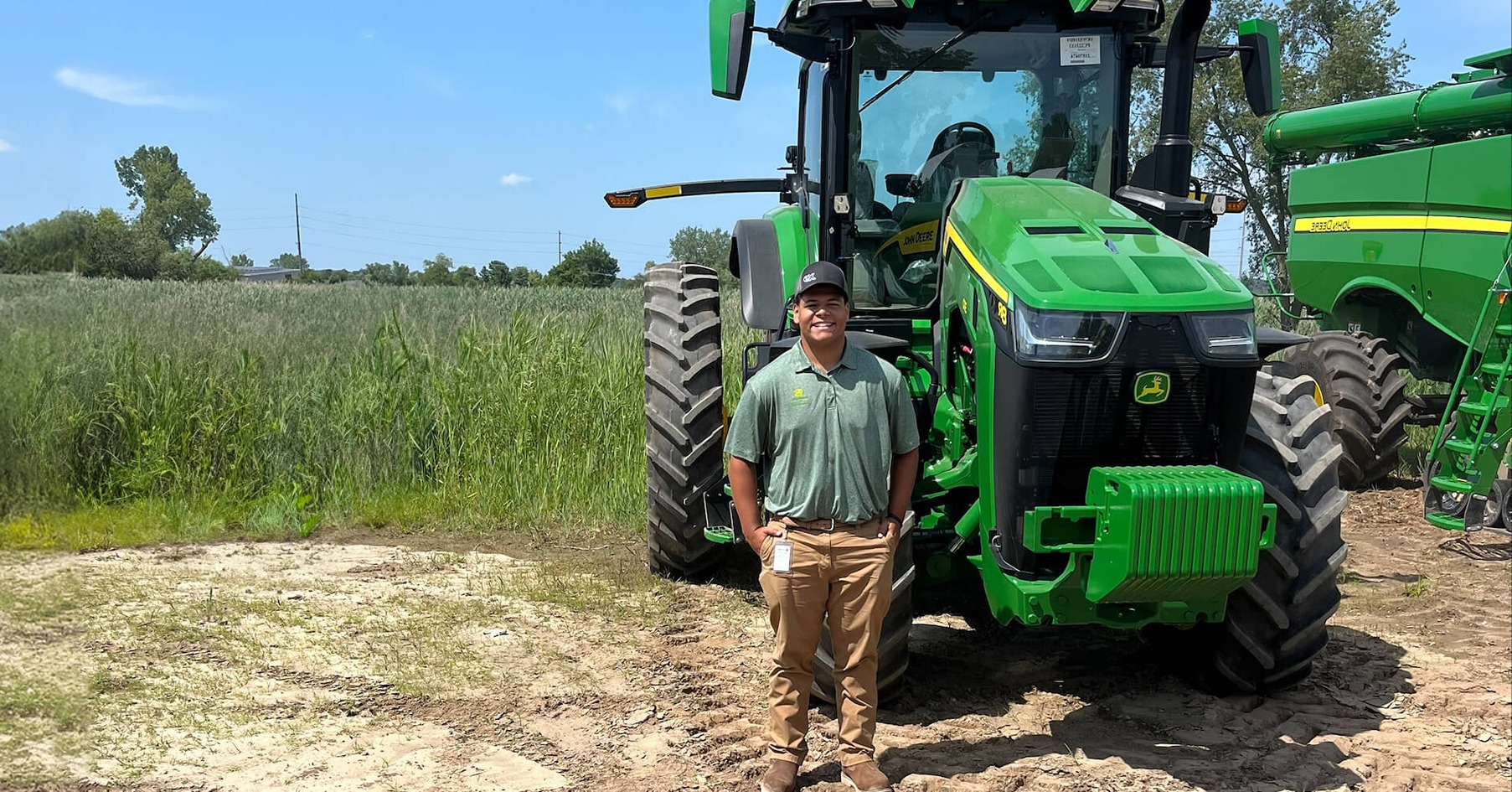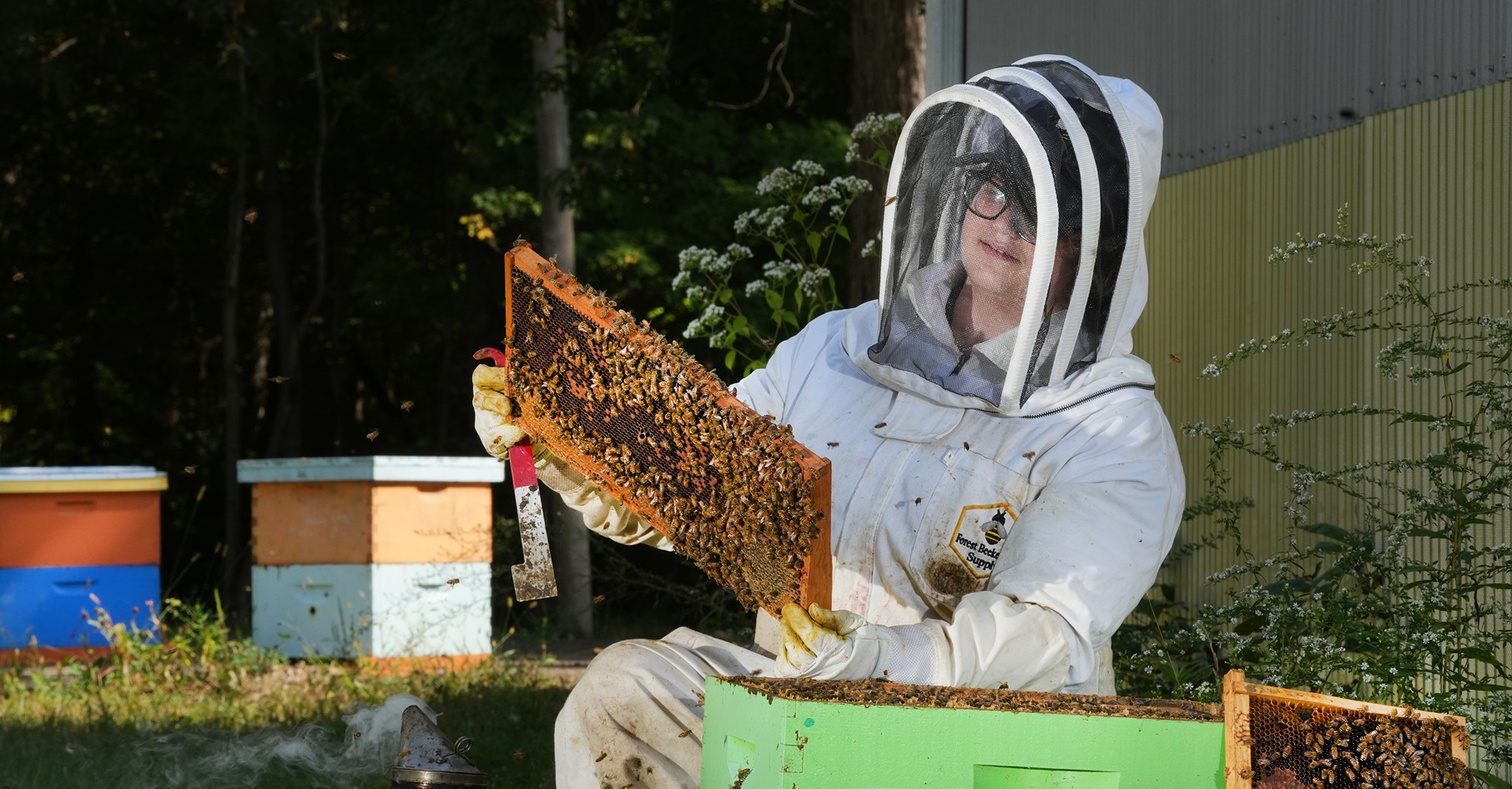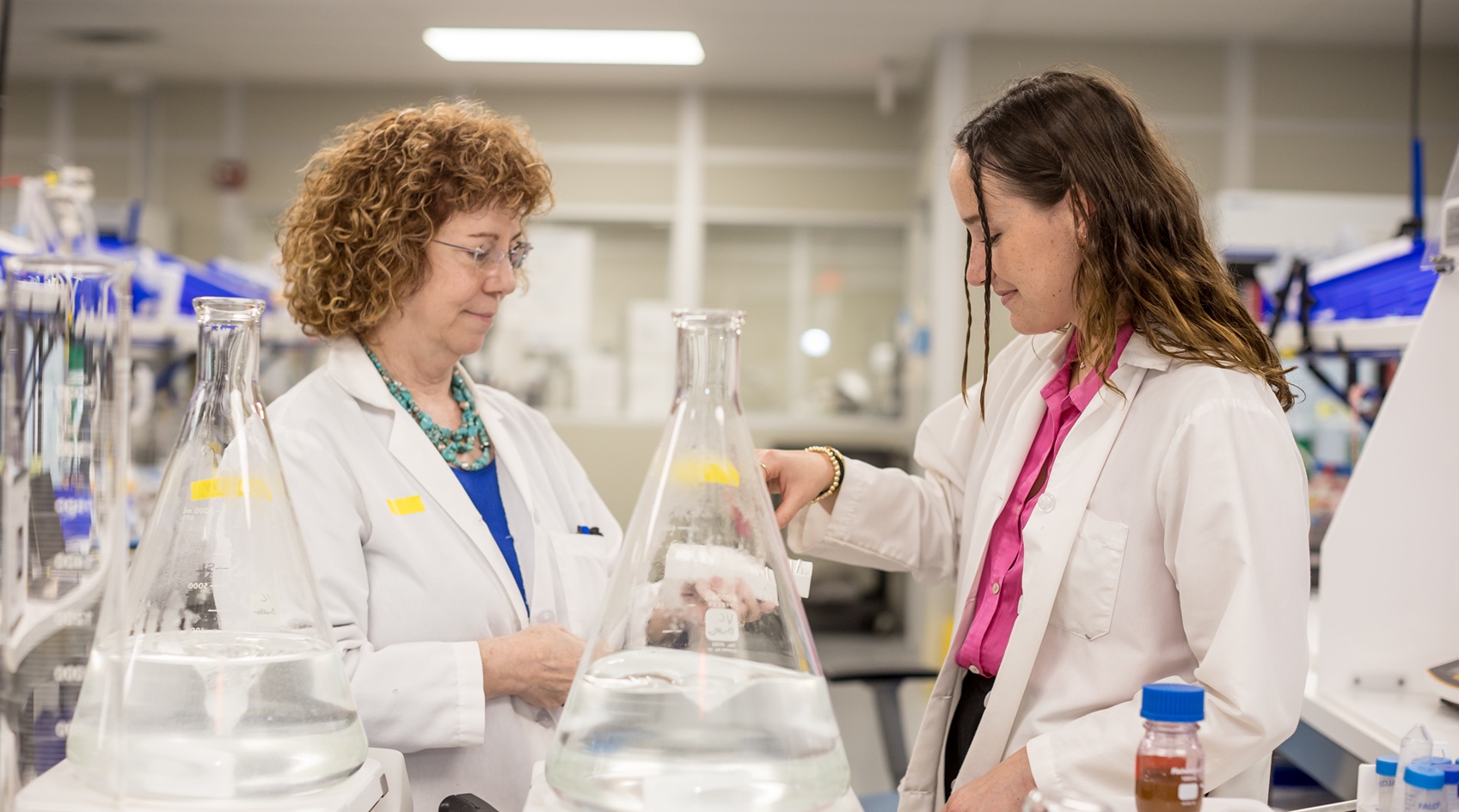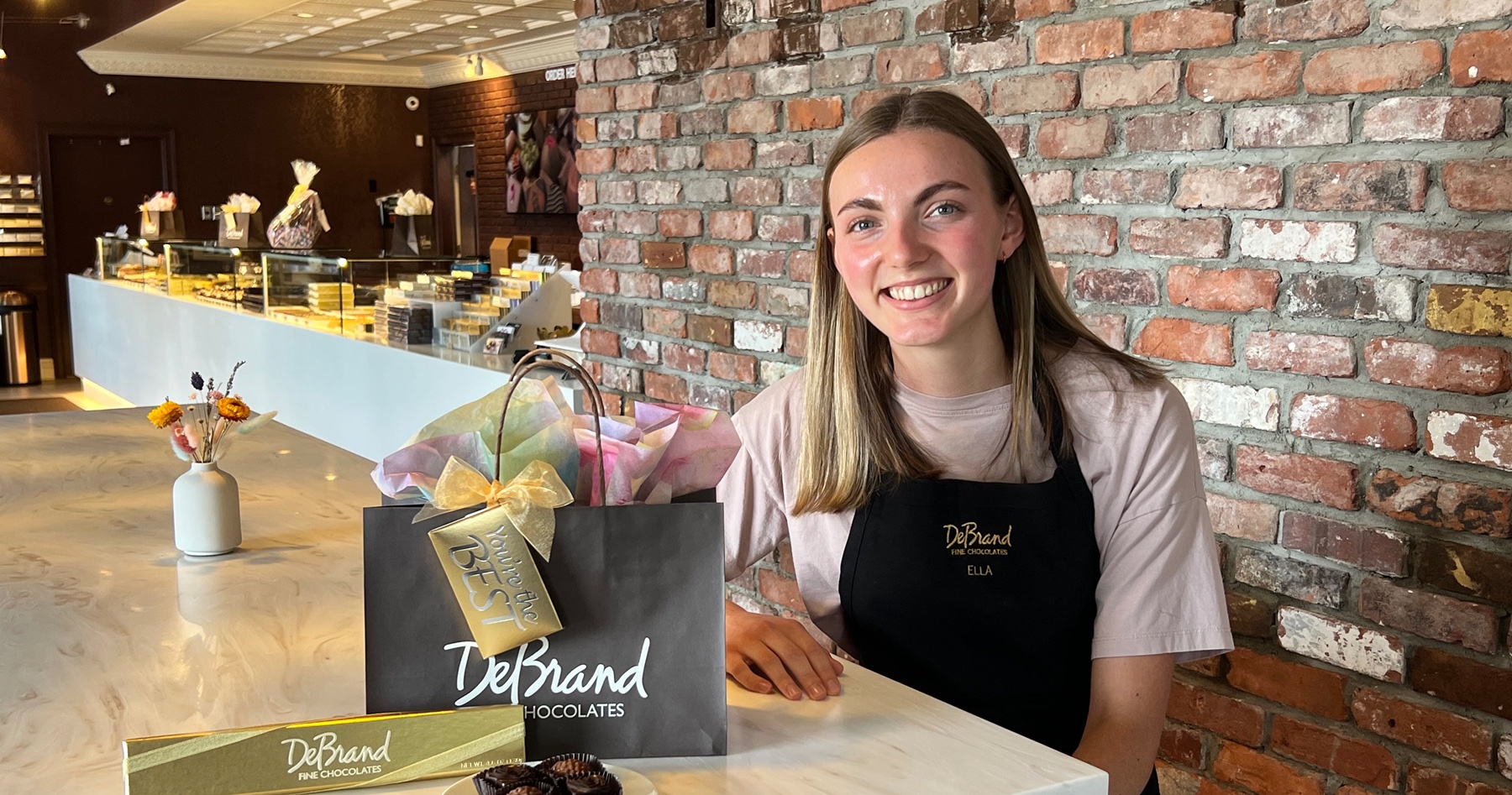
From Singapore to Indiana to Washington
Hari Thirumalai was browsing LinkedIn for summer jobs when he came across a post from the country’s third-largest wine company calling for internship applicants.
The agronomy major jumped at the opportunity. Not only would he expand his resume, but he’d gain an attractive fringe benefit: the chance to see a part of the country radically different from the Midwest. When the semester ended, he packed his car and headed west, landing in the small south-central Washington town of Prosser in May.
As one of a handful of viticulturalist interns at Ste. Michelle Wine Estates, Thirumalai spends his days riding an all-terrain vehicle through the vineyards of Washington’s Red Mountain, Yakima Valley and Walla Walla regions. Here, dry, sagebrush-covered hills surround neat rows of grape vines. The days are long—17 hours of sunlight at the height of summer—and hot, lending ideal growing conditions for grapes like Cabernet Sauvignon, Merlot, Syrah and more. This region, though the smallest American Viticultural Area, punches above its weight, producing sought-after grapes for Ste. Michelle’s award-winning wines.
And in summer, there’s plenty of work to be done. Stepping off the ATV into the vineyards, Thirumalai inspects the vines for signs of disease, observes the plants’ new growth, and collects data that the winemakers use to estimate this season’s grape yield.
 Hari Thirumalai drives an ATV through the vineyards of Ste. Michelle Wine Estates
Hari Thirumalai drives an ATV through the vineyards of Ste. Michelle Wine Estates “What we’re looking for differs throughout the season,” he says. “At the start of the season, we were looking at the height of the shoots and for winter damage. A few weeks in, we’re looking at the grape clusters and trying to get an estimate of how many clusters are on each vine.”
Now, after over a month into the internship, Thirumalai can more confidently identify potential problem areas and he is gaining a deeper understanding of the intricacies of viticulture.
“The viticulture technicians and the viticulturists do a great job teaching interns about the different vineyards in Eastern Washington and how to effectively scout or collect data,” he says. “Each vineyard is different because of factors such as management practices, location and grape varieties. We work with the technicians every day and they share their experience in the various locations. It is helpful information as it gives the interns a better understanding of how a certain vineyard functions and problems that it may face.”
For Thirumalai, who grew up in Singapore, the proverbial seeds of his interest in agriculture were planted early. His parents hail from farming communities in India and he had visited these regions as a child, so agricultural environments felt familiar. But it wasn’t until high school that the idea of agriculture as a career took root. Thirumalai attended boarding school at Mercersburg Academy in Pennsylvania, where his environmental science teacher, William Willis, ignited an interest in studying agriculture. “He talked to me about the importance of agriculture and the various opportunities in that field,” he says.
Though Thirumalai isn’t yet sure which direction to take his interests after he graduates in the spring, sustainable growing practices are front of mind.
“Coming from Singapore, which is a land-scarce nation, there is a need to increase local production to create a buffer with the varying supply of import produce because of factors such as climate change or wars. One of the ways of doing so is indoor farming and that is something I am passionate about getting involved in in the future. Growing produce in an efficient manner without needing as much land is a viable option for many cities like Singapore and is an industry that is becoming more popular."
- Hari Thirumalai
Last summer, Thirumalai explored this interest at an internship in South Bend, at Pure Green Farms. This innovative company produces leafy greens—like romaine and arugula—year-round in a 3.5-acre hydroponic greenhouse. The entire process is hands-free and automated, from plant care to harvesting to packaging. The system is incredibly efficient, and plans thrive without the use of pesticides or fungicides. Compared to more traditional growers, Pure Green Farms has shrunk its carbon footprint by reducing the amount of water and land needed.
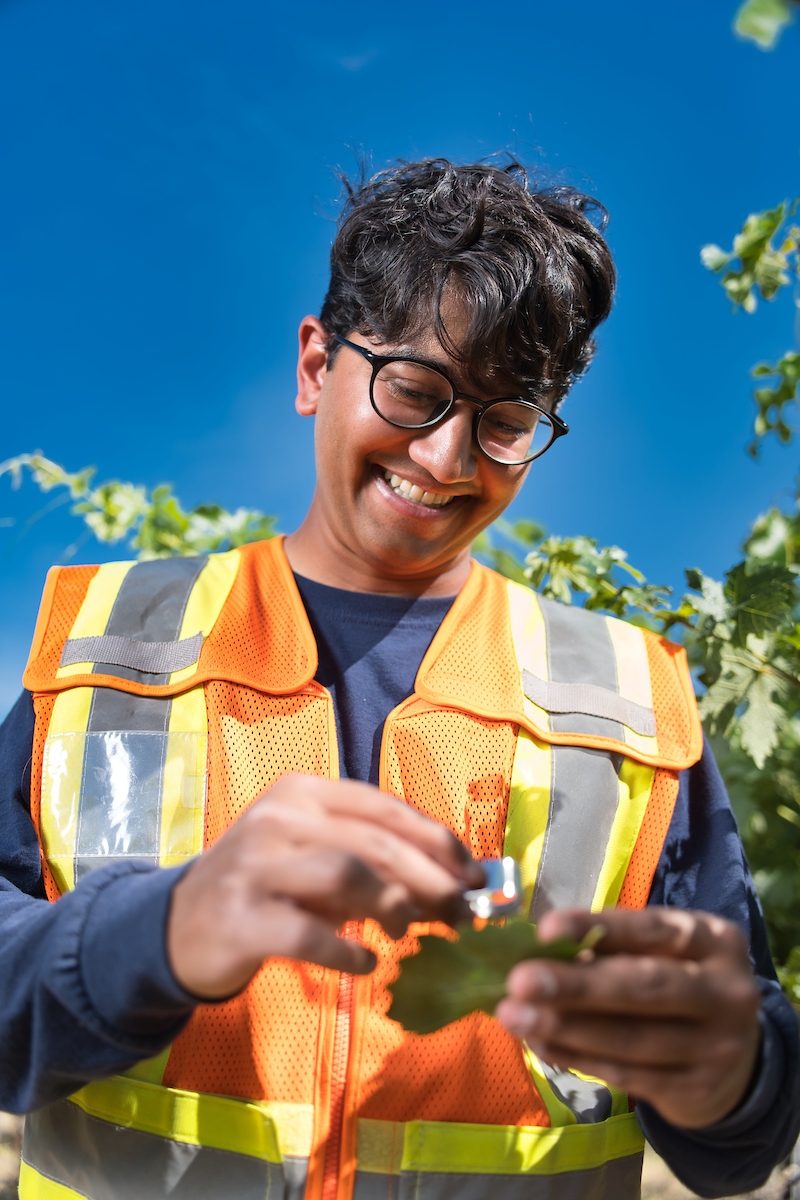
“Growing up in Singapore, I wanted to work in crop production in a way that’s more sustainable, more efficient,” Thirumalai says. The city-state is known for its focus on sustainability and innovations in urban farming; there, the government set its “30x30” goal, to produce 30 percent of its population’s nutritional needs by 2030. And vertical, indoor farms are a common solution in such a land-scarce country.
And Pure Green was a great way for Thirumalai to learn that side of agriculture.
The farm’s hands-free, indoor approach sits at the far opposite end of the farming spectrum from his current job at Ste. Michelle’s sprawling outdoor vineyards, where he’s counting grape clusters by hand. But that’s all part of the plan, too.
“This year, with Ste. Michelle, I wanted to try seeing what a field-based production system would look like,” Thirumalai says. “And the biggest difference is definitely the labor. You have workers out there all day pruning, for example, and it’s very labor intensive that way.”
Learning how large agricultural systems work is appealing—Thirumalai feels he’s learning aspects of farming that will extend beyond just grape growing, to other crops as well.
“It’s very exciting to learn about field-based agriculture, and there’s a lot of things you don’t think about when you’re looking at indoor hydroponics,” he says.
Though his career hopes aren’t fully crystalized yet, these varied learning experiences will help him keep his post-graduation options open.

